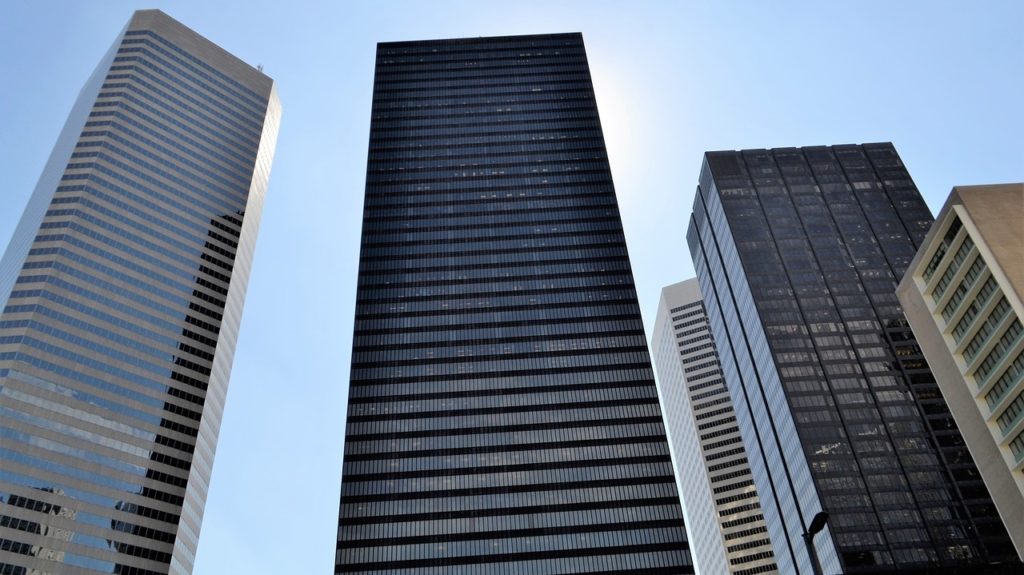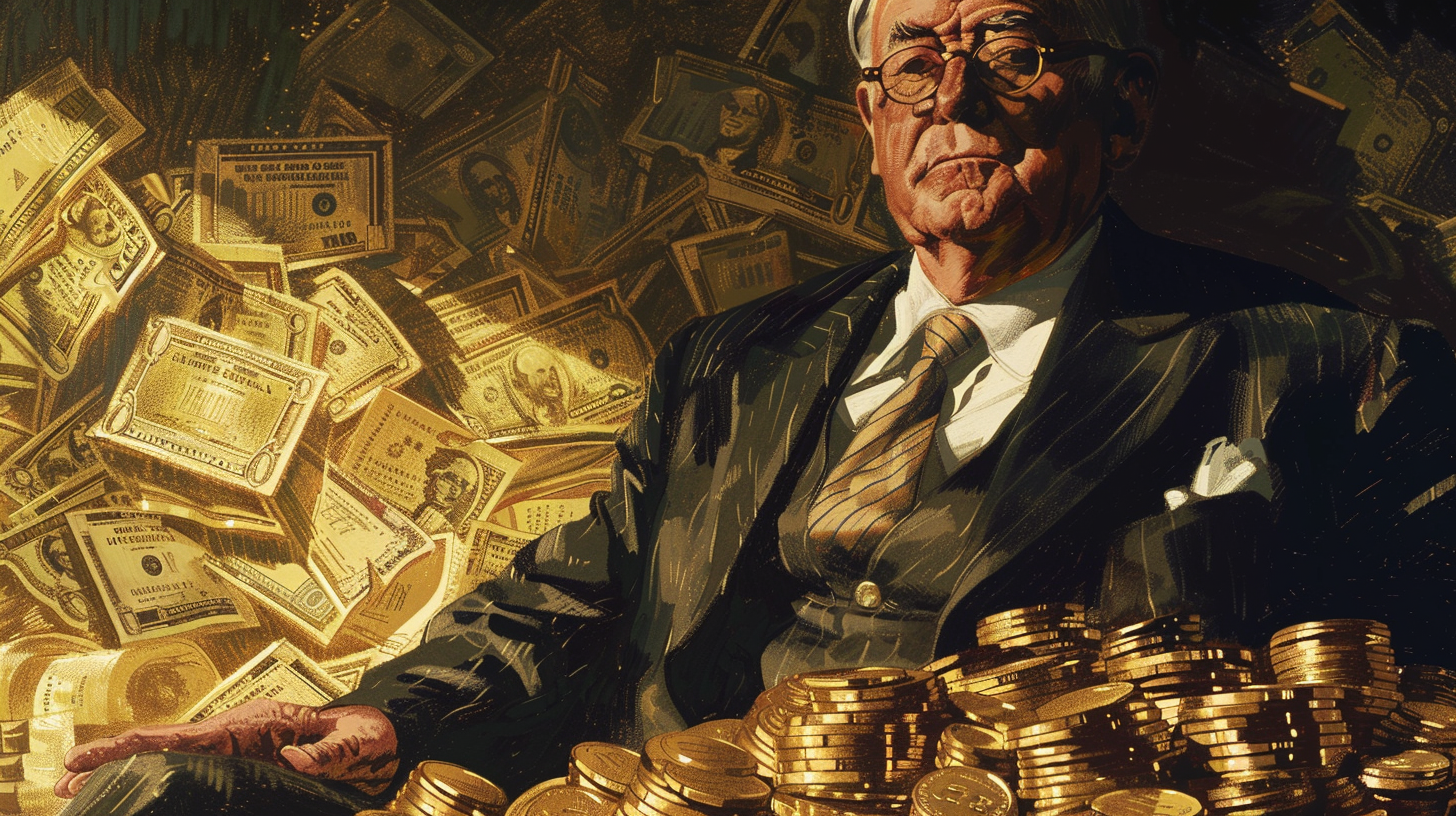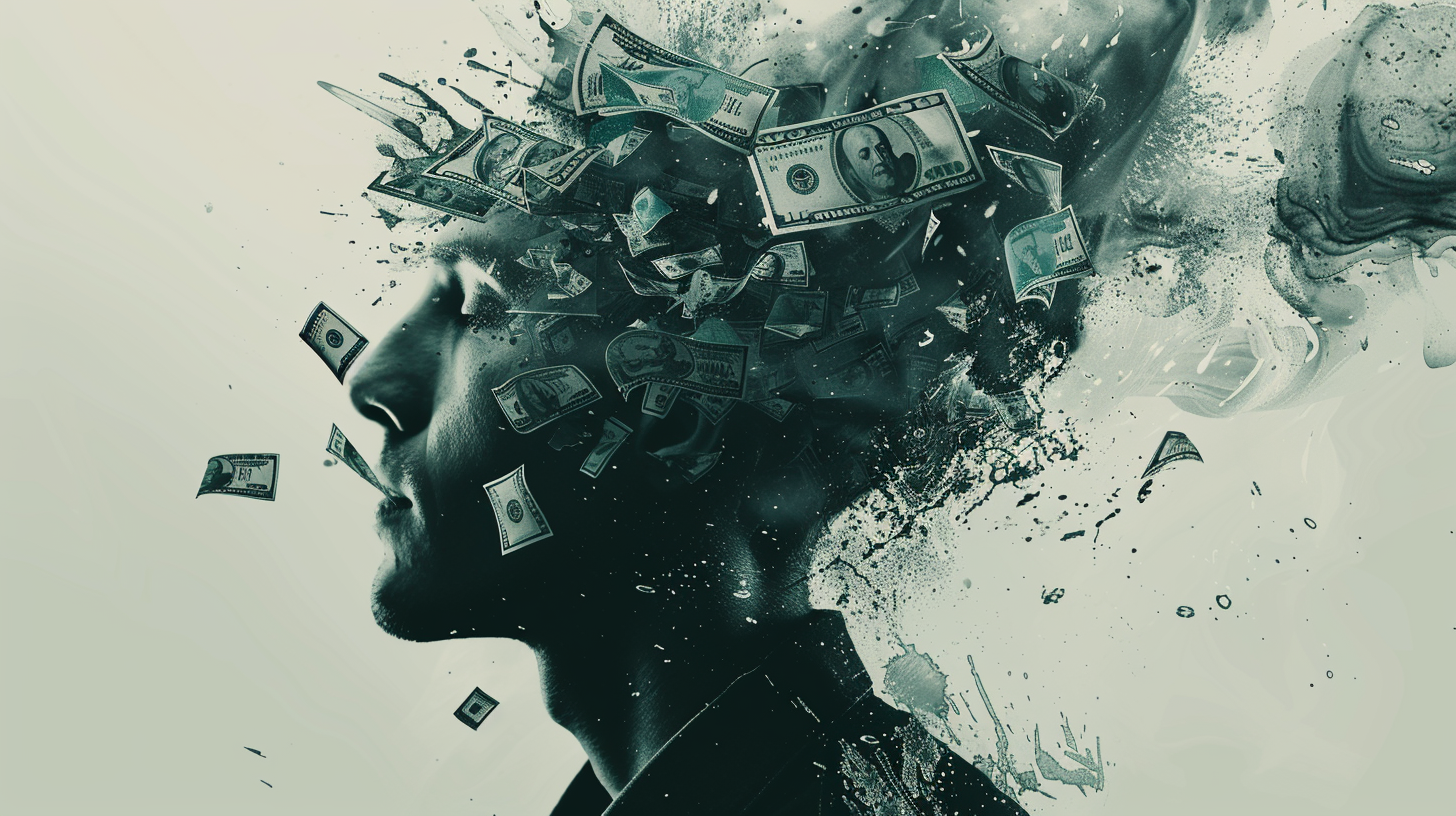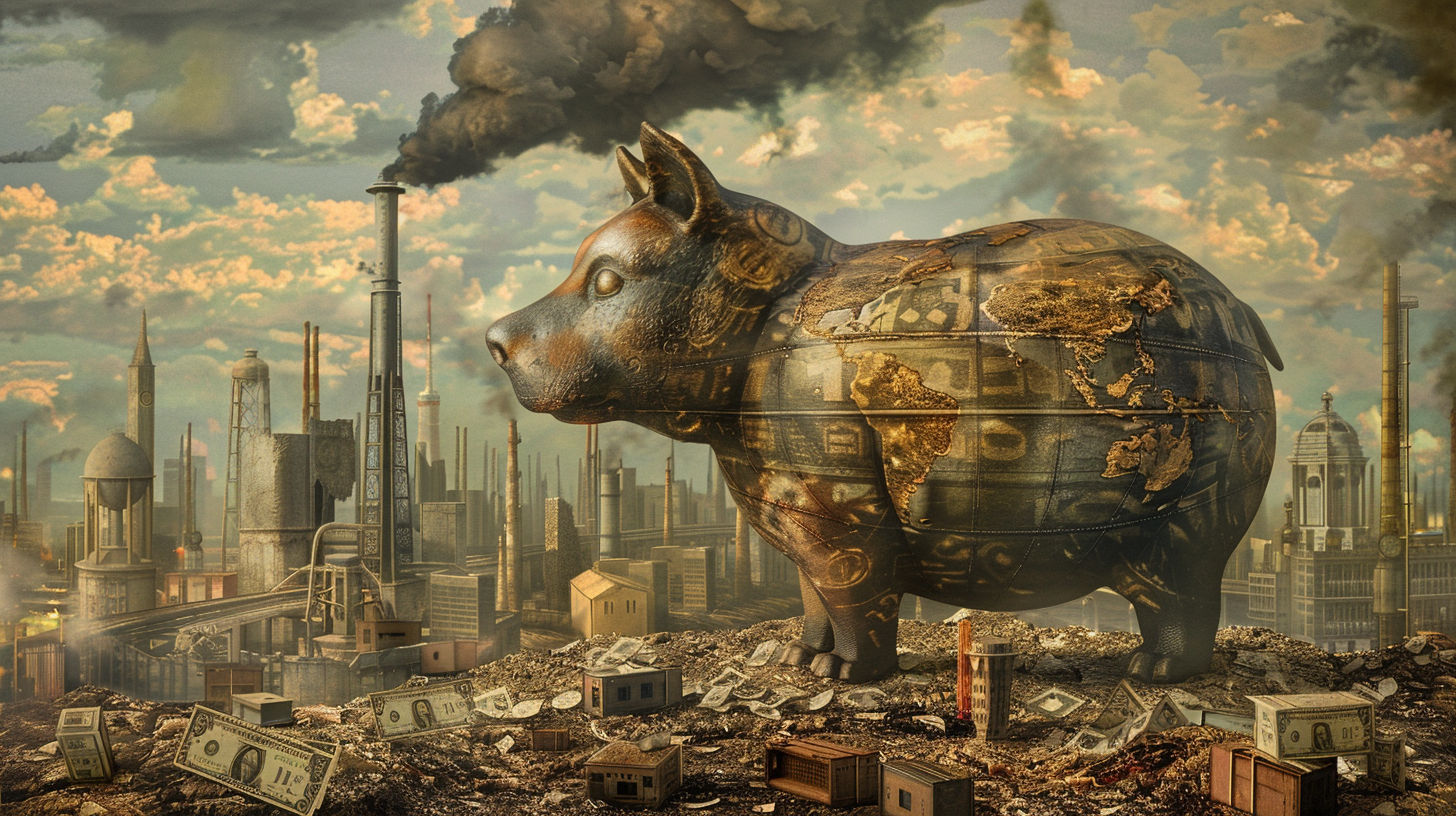Commercial Real Estate Market Drowning in Debt
We’ve talked extensively about the growing levels of debt in the economy. The national debt recently eclipsed $28 trillion. Corporate debt was already skyrocketing prior to the pandemic. All of this is driven by loose Federal Reserve monetary policy designed to drive borrowing. And people wonder why Peter Schiff insists the Fed can’t actually let interest rates rise to fight inflation.
As economist Doug French highlighted, there’s another segment of the economy buried in debt – the commercial real estate market. The problem is compounded by the fact that the value of commercial real estate is falling like a rock thanks to a shift toward work-at-home and the brick-and-mortar retail apocalypse. In a nutshell, the commercial real estate market is plagued by too much debt and not enough assets.
This is nowhere near the problem that the housing bubble was in 2008, but it is another example of the economic distortions caused by the Fed’s monetary policy.
![]()
The following article by Doug French was originally published at the Mises Wire. The opinions are the authors and don’t necessarily reflect those of Peter Schiff or SchiffGold.
It’s hard to crack the headlines of the financial pages, what with GameStop, bitcoin, Tesla, and squeezes of one sort or another. There is a squeeze in commercial real estate that won’t shock anyone, or shouldn’t. That squeeze is tenants unable to pay owners and owners unable to pay lenders.
It’s possible the pandemic will fizzle, someone will snap their fingers, and everything will revert to the precovid economy. But indications are that commercial real estate will take lumps, some that will be fatal.
The Times reports that HSBC bank, employer of forty thousand people in the UK, occupying 3.3 million square feet at sixty-six locations, announced it’s cutting the bank’s real estate needs by 40 percent.
Noel Quinn, chief executive of HSBC, told the Times the plan was “long term,” because there would be “a very different style of working than before.” You may wonder what the bank pays in rental costs. The Times describes it as “several billion.”
Jes Staley, who runs rival Barclays, said last week that working from home was getting “old” for employees. Really? I wonder if he actually talked to any of his staff? Meanwhile, Shaun Dawson, head of insights at DeVono Cresa, sees it differently: “The pandemic has given more traditional office occupiers the impetus to change, and I think for those who are already adjusting to different working practices, it’s just giving them the drive to continue with rationalizing floorspace.”
The market segment which has a jump on where the office market may go is retail malls. You know, those places where you used to go to buy things. Take for instance the Prizm Outlets mall, about a forty-minute drive south of Las Vegas, on the California border in what is known as Primm, Nevada.
The mall is less than 60 percent occupied, but last July the property appraised for $28.2 million. Last month the property only brought $1.525 million at auction. Bloomberg reported the mall was part of CMBX 6, a commercial real estate credit derivatives index with heavy exposure to shopping centers and malls.
The Prizm may be the first of many problems in the CMBX 6. “We expect mall liquidations to continue: 31 of the 39 malls in CMBX 6 are currently impaired,” said Dan McNamara, a principal at hedge fund MP Securitized Credit Partners, which has bet against CMBX 6 as part of its broader strategy.
The drop from $28.2 million to $1.525 is considerable, but back in 2012 the property was valued at $125 million and supported a loan of $73 million, which “was bundled into a commercial mortgage-backed security called COMM 2012-CR4 in October 2012, one of 48 loans packaged into the multi-loan transaction known as a conduit,” according to Bloomberg.
Speaking of 2012, a regional mall with 560,000 square feet of retail space at the 1.2 million–square-foot Town Center at Cobb, in Kennesaw, Cobb County, Georgia, owned by Simon Property Group and encumbered with a $177.5 million mortgage from Deutsche Bank, was securitized and spread over two commercial mortgage-backed securities (CMBS) that year.
Simon is the largest mall landlord in the nation, but when the numbers don’t work and the loan is nonrecourse, owners like Simon simply mail the keys to the German bank. Back in 2012, the mall appraised for $322 million. Last October, the value was slashed by 60 percent to $130.4 million.
The bidding started at the aforementioned $130.4 million, but there were no bidders, making Deutsche Bank and other CMBS holders the proud owners. Simon is not shy about walking away. Wolf Richter of WolfStreet.com reports Simon has threw the keys to lenders on “the 1-million square foot Independence Center in a suburb of Kansas City, MO, in 2019. When the mall was sold in a foreclosure sale, the $200-million CMBS backed by the mall generated a loss of $149.7 million—a loss of 75%!”
“Simon Property Group also wants to turn its 426,761-square-foot Springfield Plaza in Springfield, MA, over to lenders and walk away from the $28.3 million mortgage,” writes Richter, as well as the Mall at Tuttle Crossing in Dublin, Ohio; Southridge Mall in Greendale, Wisconsin; Montgomery Mall in North Wales, Pennsylvania; and Crystal Mall in Waterford, Connecticut. The debt on these four malls totals $411 million.
It won’t help mall valuations that Unibail-Rodamco-Westfield (URW), owner of twenty-seven malls in the US—sixteen in California, three in Maryland, and two apiece in Illinois, Florida, and New York City, where it owns the Westfield World Trade Center. It also has ten shopping centers in airport terminals, including JFK, LAX, MIA, and Chicago O’Hare. It is in desperate need of selling anything it can to lighten its $32 billion debt load.
Returning to the office market, a techsodous is underway in San Francisco. Oracle is headed for Austin, Texas, making the total vacant office space in the Bay area, sublease and direct lease combined, 13.9 million square feet, a new record, exceeding the dot-com bust and the financial crisis.
In New York City, “$1.1 billion worth of property loans are now considered distressed in Times Square, according to the real-estate-data platform CREDiQ,” wrote Joy Wildermuth for MarketWatch. “And its latest property appraisal slashed its value by 80% to about $92.5 million.”
US commercial property debt climbed to an all-time high of $3.06 trillion in the third quarter of 2020, from a ten-year low of $2.2 trillion in 2012, according to Federal Reserve data.
Now the question is, Who will pay off all that debt? It looks like the borrowers will leave it to the lenders.





 As fiscal imbalances persist, driven by coercive measures and artificial currency creation, the middle class faces erosion and purchasing power dwindles. But as the world hurtles towards a potential reckoning, the lingering question remains: can this precarious balance last, or are we teetering on the brink of a cataclysmic economic shift?
As fiscal imbalances persist, driven by coercive measures and artificial currency creation, the middle class faces erosion and purchasing power dwindles. But as the world hurtles towards a potential reckoning, the lingering question remains: can this precarious balance last, or are we teetering on the brink of a cataclysmic economic shift? Beneath the veneer of headline job gains, the American economy teeters on the brink: native employment dwindles as part-time and immigrant jobs surge. Government hiring camouflages looming recession warnings. Inflation and political blunders worsen the crisis, fueling public outrage at the establishment’s mishandling of the economy.
Beneath the veneer of headline job gains, the American economy teeters on the brink: native employment dwindles as part-time and immigrant jobs surge. Government hiring camouflages looming recession warnings. Inflation and political blunders worsen the crisis, fueling public outrage at the establishment’s mishandling of the economy. On April 5 1933, Franklin D. Roosevelt abandoned the gold standard, wielding questionable legal power amidst America’s dire economic depression. His whimsical approach to monetary policy, including coin flips and lucky numbers, unleashed unprecedented inflation and price increases that have since amounted to nearly 2500%. Our guest commentator explores this tragic history and the legacy […]
On April 5 1933, Franklin D. Roosevelt abandoned the gold standard, wielding questionable legal power amidst America’s dire economic depression. His whimsical approach to monetary policy, including coin flips and lucky numbers, unleashed unprecedented inflation and price increases that have since amounted to nearly 2500%. Our guest commentator explores this tragic history and the legacy […] Welcome to the world of modern economics where the term “inflation” no longer signifies the increase in the quantity of money, but has evolved into a plethora of buzzwords. From “shrinkflation” to “greedflation,” these new terms and semantic shifts are by no means harmless but a manipulation of popular sentiment. Von Mises said they play […]
Welcome to the world of modern economics where the term “inflation” no longer signifies the increase in the quantity of money, but has evolved into a plethora of buzzwords. From “shrinkflation” to “greedflation,” these new terms and semantic shifts are by no means harmless but a manipulation of popular sentiment. Von Mises said they play […] Assuming CPI measurements are not understatements, the dollar’s value has plummeted by a staggering one-fifth since 2020, yet, rather than acknowledging its role in fueling this economic turmoil, the Biden administration deflects, casting capitalism and corporate greed as the villains. The latest February CPI data show more signs of the upcoming inflation bloodbath.
Assuming CPI measurements are not understatements, the dollar’s value has plummeted by a staggering one-fifth since 2020, yet, rather than acknowledging its role in fueling this economic turmoil, the Biden administration deflects, casting capitalism and corporate greed as the villains. The latest February CPI data show more signs of the upcoming inflation bloodbath.